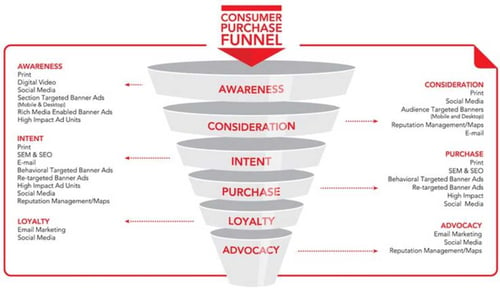
The Effects Of Positive Brand Association
In the midst of a dying industry, such as magazines and newspapers, and the slow and painful migration of TV ad dollars towards social video platforms such as YouTube and Facebook, we have a tendency to forget why print advertising mattered. Why did we care so much about reading or owning a magazine with a certain brand plastered on the front page?
We cared because we paid for it. We paid for it because we cared about the product. We cared because we took the time to appreciate the quality stories and quality ads that were placed strategically across the entire magazine (ok, maybe that's just me).
Sure, print advertising had its faults, such as not giving us any way to track actual engagement rates on ads, or no way to actually see how many people flipped through the end of the newspaper to see your ad on the last page...
However, one thing was important - and I think we've put this aside with a more "user-focused advertising" approach, rather than a context and brand association-focused approach: the positive emotion generated by the brand association.
What is context and why does it matter?
The context of an advertisement is the way it is delivered. It's the surrounding environment to an ad in which you consume it and engage with it. The context in advertising matters because it puts the user in a certain state of mind before consuming the ad, and either helps the user assimilate the advertisement's message or ignore it. Put into the right context, an ad can have a tremendous impact.
What Burger King and Colenso BBDO did in response to annoying pre-roll ads on YouTube was genius. I will resonate with Burger King and actually have a great positive emotion instead of a negative one after being forced to watch a 15-second pre-roll ad.
Was it more work from a creative angle? Definitely. Will it be much more efficient in terms of purchase intent? There's no real way to tell, but I’m certainly much more inclined to relate to Burger King now that I know they understand the pain of going through pre-rolls.
Make the effort, it's worth it!
Okay, the context matters. Now, why is Brand Association important?
Above, I gave you an example of a great context play by BBDO and Burger King. You all remember the time where dozens of Fortune 500 companies pulled their ads off of YouTube because they were spotted appearing next to extremist and racist content? I do. Fortunately for Google, that only made a small dent in their advertising revenue, but it created a big dent in the ad industry as a whole and opened up some important dialogue around context and brand safety.
Now let's say brand safety is taken care of and the context is good. How can we bring the ad assimilation environment to the next level? Positive brand association.
Imagine the impact an ad can have when not only is it placed beside a piece of content that generates emotion, but it’s also in the right context AND is brand safe. This is the golden scenario.
Positive brand association is when a positive emotion about a brand can be created when a user consumes a piece of content that they can relate with (and they can see the brand associated with that content). A genuine connection is then created and this ultimately helps drive sales and brings them one step further down the consumer purchase funnel.

I challenge you to create a positive brand association in your next marketing campaign by incorporating these 3 key factors to making your ad stick to consumers you want purchasing your product:
1. Associate your brand with a story, either by creating a story or sponsoring a story that resonates with your brand's core values.
2. Make sure your ad appears in the right context. You want people to be in the right state of mind when viewing your ad so it has a higher chance of converting to a positive emotion.
3. Target brand-safe platforms or media websites. Avoid just pushing your ad to as many people as possible and actually think about the value of the brand or platform you'll be using to advertise your message.
Want to create your own highly effective content? Contact us to find out how we can help!